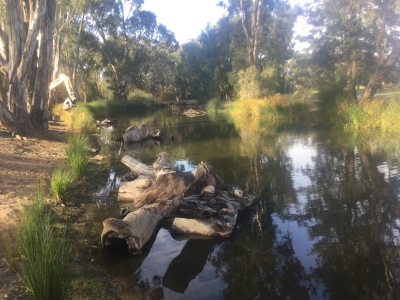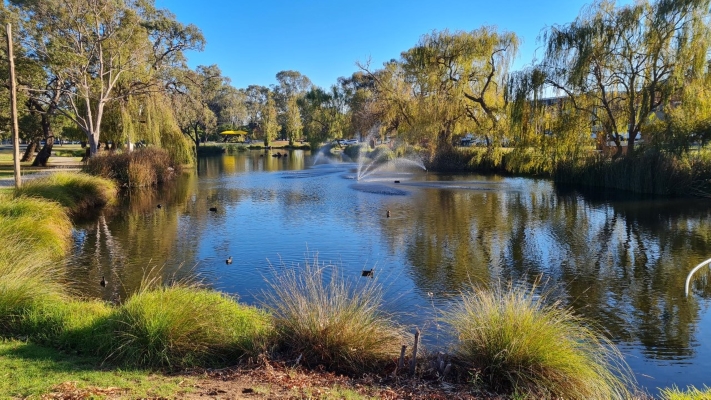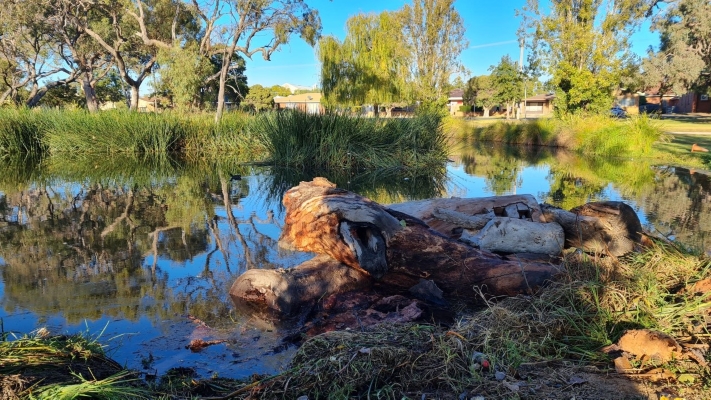Deniliquin Lagoons refuge re-snagging project
NRM NEWS - AUGUST 2021 - AQUATIC SYSTEMS
By John Conallin, Edward-Wakool Angling Association, Deniliquin Kolety Lagoons Landcare Group

The Deniliquin Lagoons Community Restoration Project has restored habitat and fish species in the Deniliquin Lagoons system over the last decade. One of the major objectives of the restoration is to create refuge populations of small and medium-bodied threatened wetland fish species. Once these populations are established, the lagoons can act as source populations for reintroducing into other town lakes and natural wetlands.
Our Fish
Eel-tailed catfish and Southern Pygmy Perch have been introduced to the lagoons and are establishing themselves. Eel-tailed catfish are already breeding well and being translocated to other town lakes such as Finley and Moulamein. Other threatened species such as Purple Spotted Gudgeons and Olive Perchlet will be reintroduced as they become available through captive breeding programs.
Our Habitat
Emergent and submerged macrophytes are very important for providing essential habitat, and both are well established in each of the lagoons through community-based re-planting programs. One of the challenges for maintaining and breeding fish is sustaining over-wintering habitats as aquatic plants die back during the winter. In natural systems, large woody debris provides overwintering habitat. Submerged and semi-submerged trunks, branches, and root masses are a key structural component within freshwater systems. Woody debris and snags offer essential protection for fish from predation and vital habitat for breeding and feeding. Extensive removal of snags from the Murray Darling Basin (MDB) occurred in the last 150 years for riverboat navigation, improved water conveyance and infrastructure protection. The results from many long-term research studies demonstrated that native fish of all sizes respond positively to the addition of snags. Although conceptually simple, there is a lot of science behind the placement of snags. Consideration must be given to the species, type, size, shape and quantity of snags needed, and their position and orientation within the water body. This level of detail is necessary to ensure that the structures are placed to maximise outcomes for fish communities.

Our Project
The Edward-Wakool Angling Association instigated a partnership project to reintroduce woody debris and snags to four rehabilitated Deniliquin lagoons, Matthew’s Burchfield, McFaull, and Browns Park Lagoons, through funding from Murray LLS. The project is a vital component of the ongoing threatened species project. Employing local contractors’ snags were placed in each of the lagoons. Large single snags were added to deeper water sections, and snag complexes made up of different sized logs were placed closer to the banks. This array of snag complexes will help the threatened native fish in the lagoons system avoid birds and water rats over the winter period and provide excellent habitat for breeding opportunities in the future.

Photo Credits: Dan Hutton